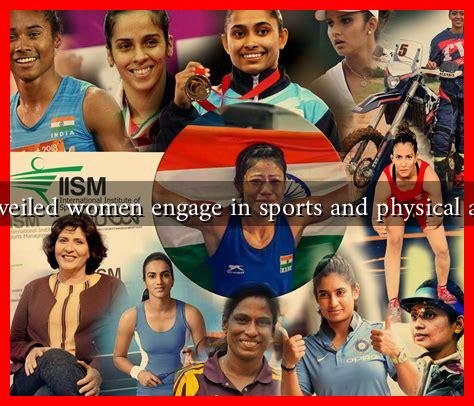-
Table of Contents
- How Do Veiled Women Engage in Sports and Physical Activities?
- The Cultural Context of Veiled Women in Sports
- Challenges Faced by Veiled Women in Sports
- Innovative Solutions and Support Systems
- Case Studies: Success Stories of Veiled Women in Sports
- The Impact of Social Media and Community Support
- Conclusion: A Path Forward for Veiled Women in Sports
How Do Veiled Women Engage in Sports and Physical Activities?
In recent years, the participation of veiled women in sports and physical activities has gained significant attention. As cultural norms evolve and the conversation around women’s rights progresses, more veiled women are breaking barriers and engaging in various sports. This article explores how veiled women navigate the world of sports, the challenges they face, and the inspiring stories that highlight their resilience and determination.
The Cultural Context of Veiled Women in Sports
The term “veiled women” typically refers to women who wear traditional Islamic head coverings, such as hijabs, niqabs, or burqas. The cultural significance of these garments varies widely across different regions and communities. In many cases, wearing a veil is a personal choice that reflects religious beliefs, cultural identity, or both. However, this choice can sometimes lead to misconceptions about women’s capabilities and interests in sports.
Challenges Faced by Veiled Women in Sports
Despite the growing acceptance of veiled women in sports, several challenges persist:
- Societal Perceptions: Many veiled women face stereotypes that question their athleticism and commitment to physical activities.
- Limited Access to Facilities: In some regions, sports facilities may not be accommodating to women, particularly those who wear veils.
- Safety Concerns: Issues related to harassment and safety can deter veiled women from participating in public sports events.
- Inadequate Sportswear: Finding appropriate sportswear that aligns with modesty requirements can be a significant hurdle.
Innovative Solutions and Support Systems
To address these challenges, various organizations and initiatives have emerged to support veiled women in sports:
- Inclusive Sports Programs: Many community centers and sports organizations are developing programs specifically designed for women, providing a safe and welcoming environment.
- Custom Sportswear: Brands like Nike and Adidas have introduced sportswear lines that cater to modesty while ensuring comfort and performance.
- Role Models: Prominent athletes such as Ibtihaj Muhammad, the first American athlete to compete in the Olympics wearing a hijab, serve as role models, inspiring young veiled women to pursue sports.
Case Studies: Success Stories of Veiled Women in Sports
Several inspiring stories highlight the achievements of veiled women in sports:
- Ibtihaj Muhammad: As a fencer, she not only made history by competing in the 2016 Olympics but also advocated for inclusivity in sports.
- Amna Al Haddad: An Emirati weightlifter, she has broken stereotypes and encourages women in the Middle East to embrace fitness and strength training.
- Huda Al-Mahdi: A Saudi Arabian marathon runner, she has participated in various international marathons, promoting health and fitness among women in her community.
The Impact of Social Media and Community Support
Social media platforms have played a crucial role in amplifying the voices of veiled women in sports. Through platforms like Instagram and Twitter, athletes share their journeys, challenges, and triumphs, creating a supportive community. This visibility helps to challenge stereotypes and encourages more women to participate in sports.
Conclusion: A Path Forward for Veiled Women in Sports
The engagement of veiled women in sports is a testament to their resilience and determination to break societal barriers. While challenges remain, the growing support from organizations, the introduction of inclusive sportswear, and the rise of role models are paving the way for a more inclusive sporting environment. As more veiled women take to the fields, courts, and tracks, they not only redefine their identities but also inspire future generations to pursue their passions without fear or limitation.
In summary, the journey of veiled women in sports is one of empowerment, resilience, and transformation. By continuing to support and promote inclusivity in sports, society can help ensure that all women, regardless of their attire, have the opportunity to engage in physical activities and achieve their athletic dreams.

